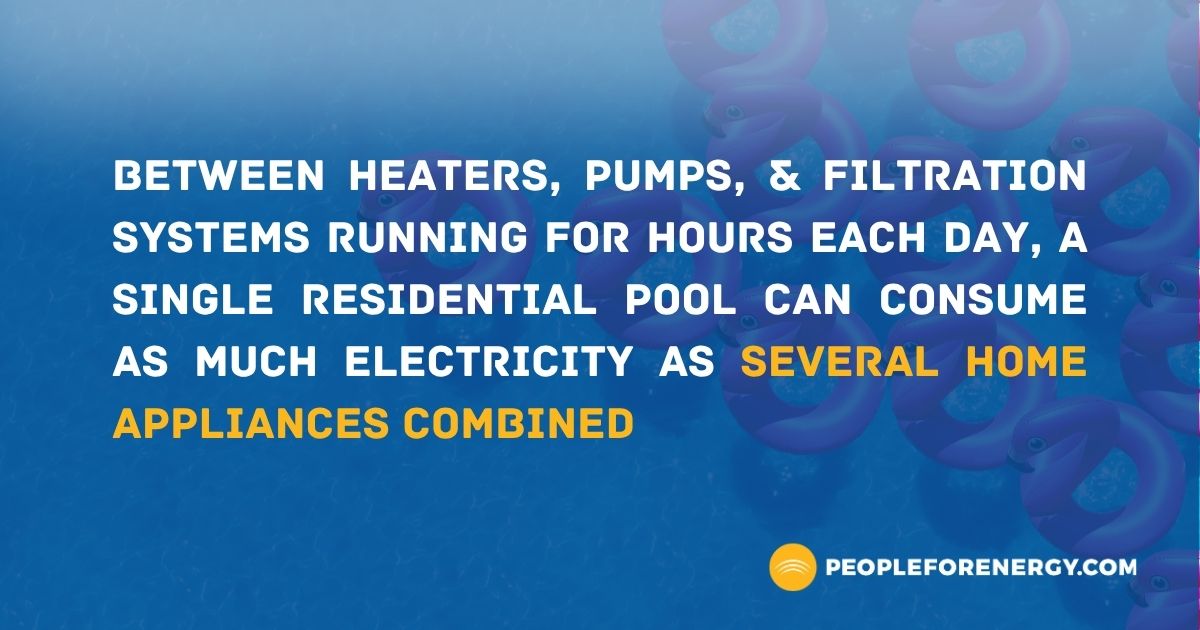As summer temperatures rise, so does our energy demand—and one of the hidden culprits is sitting in our backyards.
Swimming pools might be a staple of summer fun, but they’re also a serious energy draw. Between heaters, pumps, and filtration systems running for hours each day, a single residential pool can consume as much electricity as several home appliances combined. Multiply that across neighborhoods, and it becomes clear: pool season is power season.
This matters more than ever, because our electric grid is under strain. Grid operators are already warning of shortfalls in reliable, dispatchable power—especially during peak usage hours in the late afternoon and early evening. That means high energy use at the wrong time doesn’t just spike your electric bill—it can ripple across the system, raising costs and risking outages for everyone.
But here’s the good news: smarter pool use can make a real difference. Upgrading to energy-efficient pumps and heaters, using timers, and scheduling pool cycles during off-peak hours all help reduce the load on the grid when it’s most vulnerable.
This isn’t just about saving a few bucks—though it does that, too. It’s about keeping energy reliable and affordable for families, small businesses, and entire communities.
As our energy needs grow—with everything from data centers to electric vehicles adding to the demand—it’s critical we make choices that support a stronger grid. That means investing in efficient technologies, yes—but also ensuring we have enough dependable power from sources like natural gas and nuclear to meet these peaks when they come.
So, before you dive in this summer, take a moment to think about your pool’s impact. With a few smart changes, we can all help make summer energy cleaner, more reliable, and more affordable.
Because keeping cool shouldn’t come at the cost of powering down.

